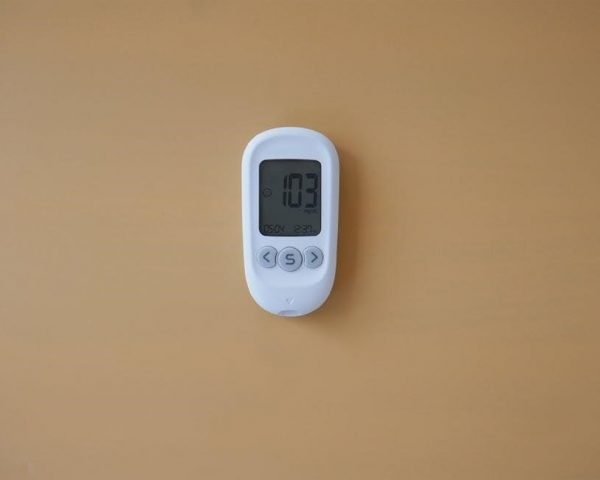Myofunctional Therapy Exercises⁚ A Comprehensive Guide
This guide explores myofunctional therapy exercises, focusing on strengthening the tongue, lips, and facial muscles. Exercises improve swallowing, breathing, and sleep apnea. Tailored programs address various needs, from children with Down syndrome to adults with sleep disorders. Effective exercises improve oral posture and function, enhancing quality of life. Consult a qualified therapist for personalized treatment and effective home practice schedules.
Myofunctional therapy (MFT) is a specialized treatment focusing on the rehabilitation of oral and facial muscles. It addresses issues stemming from incorrect muscle function, impacting speech, swallowing, breathing, and even sleep. MFT aims to correct dysfunctional habits like tongue thrusting, mouth breathing, and improper swallowing patterns. These habits can lead to various problems, including temporomandibular joint (TMJ) disorders, orthodontic relapse, and sleep apnea. The therapy involves a series of exercises designed to strengthen and retrain these muscles, restoring proper function and posture. A comprehensive approach considers individual needs and goals, providing a personalized plan to correct muscle imbalances and improve overall oral health and well-being. This non-invasive approach often complements other treatments, such as orthodontics, for enhanced effectiveness. The exercises are typically performed under the guidance of a qualified professional.
Types of Myofunctional Exercises
Myofunctional therapy employs a diverse range of exercises categorized by the muscle groups they target. Exercises for tongue posture and strength focus on correct tongue placement and improved muscle tone. These might include tongue-to-palate exercises and isometric holds to enhance strength and control. Lip and cheek muscle strengthening exercises improve lip closure and facial muscle coordination. These could involve lip presses, cheek puffs, and resistance exercises using straws or other tools. Exercises aimed at improving swallowing patterns focus on correcting atypical swallowing habits, such as tongue thrusting. These often involve practicing the correct tongue and jaw movements during swallowing. Nasal breathing exercises promote proper breathing habits through the nose, rather than the mouth. Techniques might involve conscious nasal inhalation and exhalation, and exercises to improve nasal airflow. Each exercise type contributes to the overall goal of restoring proper orofacial muscle function and addressing underlying issues.
Exercises for Tongue Posture and Strength
Correct tongue posture is crucial for proper breathing, swallowing, and speech. Exercises focus on achieving and maintaining the tongue’s resting position against the roof of the mouth. The “tongue-to-palate” exercise involves consciously placing the tongue tip behind the upper front teeth, gently touching the alveolar ridge. Holding this position for extended durations strengthens the muscles and improves awareness. Another effective exercise involves repeatedly pressing the tongue against the palate with increasing force, building strength and endurance. “Tongue clicks” involve forcefully pressing the tongue against the palate and rapidly releasing it, creating a clicking sound. This dynamic exercise improves tongue mobility and coordination. These exercises should be performed regularly throughout the day for optimal results. Remember to maintain a relaxed jaw and proper breathing while executing these exercises. Consistent practice is key to achieving and maintaining correct tongue posture and strength.
Exercises for Lip and Cheek Muscle Strengthening
Strengthening lip and cheek muscles is vital for proper oral function and facial aesthetics. Exercises focus on improving muscle tone and control, essential for activities like eating, speaking, and breathing. One effective exercise involves repeatedly puckering the lips, forming a tight “o” shape, then relaxing them. This strengthens the orbicularis oris muscle, crucial for lip closure. Another exercise involves smiling broadly, holding the position for a few seconds, then relaxing. This targets the zygomaticus major muscle, enhancing cheek muscle strength and improving facial expression. For cheek strengthening, try gently puffing out your cheeks with air, holding the air for a few seconds before releasing slowly. Repeat this several times, focusing on feeling the muscles work. Lip and cheek resistance exercises can also be incorporated. These include gently pressing the lips against a resistance such as a tongue depressor, or pressing the cheeks against the palms of your hands. Consistent practice of these exercises will improve muscle tone, strength, and overall oral function.
Exercises for Improved Swallowing Patterns
Myofunctional therapy offers several exercises to improve swallowing patterns, addressing issues like tongue thrust or atypical swallowing habits. The “cracker swallow” is a common technique. It involves placing a small, dry cracker on the tongue and swallowing it slowly, focusing on the tongue’s upward and backward movement against the palate. This exercise helps train the tongue to move correctly during swallowing, promoting proper muscle coordination. Another exercise involves practicing swallowing saliva, paying close attention to the tongue’s movement and the feeling of the swallow. This enhances awareness of proper swallowing mechanics. For those with difficulty swallowing liquids, practicing swallowing small amounts of water while maintaining a relaxed jaw and tongue position can be beneficial. The key is consistency; regular practice reinforces the new swallowing pattern. It’s crucial to perform these exercises in front of a mirror to monitor tongue posture and ensure correct movement. A qualified myofunctional therapist can assess individual needs and tailor exercises to achieve optimal results. Remember, consistency is key to improving swallowing patterns effectively.
Exercises for Nasal Breathing Techniques
Many myofunctional therapy programs incorporate exercises to promote nasal breathing, which is crucial for overall oral health. One effective technique involves consciously focusing on inhaling and exhaling through the nose, ensuring the mouth remains closed. Practice this throughout the day, particularly during periods of relaxation or rest. Another exercise focuses on strengthening the nasal passages. Gentle nasal dilation exercises, involving gently widening the nostrils, can improve airflow and reduce mouth breathing. To improve nasal breathing during sleep, try sleeping on your side to improve airway patency. This can help prevent mouth breathing during the night. For those who experience nasal congestion, saline nasal sprays or rinses can help clear nasal passages, facilitating nasal breathing. It’s crucial to maintain good posture while practicing these exercises; a slumped posture can restrict airflow and hinder nasal breathing. Combine these exercises with regular tongue exercises to improve overall oral function. A therapist can guide you through personalized exercises to optimize nasal breathing and address any underlying issues.
Myofunctional Therapy for Sleep Apnea
Myofunctional therapy offers a non-invasive approach to managing sleep apnea, a condition characterized by pauses in breathing during sleep. The therapy focuses on strengthening the muscles of the tongue, throat, and airway, preventing airway collapse during sleep. Exercises often involve improving tongue posture and strength to maintain an open airway. These exercises aim to improve muscle tone and coordination, preventing airway obstruction. Studies suggest myofunctional therapy can significantly reduce the apnea-hypopnea index (AHI), a measure of sleep apnea severity, in both adults and children. Improved muscle strength and tone lead to better airway patency and reduced snoring. While myofunctional therapy is not a standalone treatment for all sleep apnea cases, it often serves as a valuable adjunct therapy, complementing other treatments like CPAP machines or surgery. Success rates vary, and individual results depend on the severity of the sleep apnea and adherence to the therapy regimen. Regular practice of prescribed exercises is crucial for achieving optimal outcomes. Consult a sleep specialist or myofunctional therapist for personalized assessment and guidance.
Myofunctional Therapy for Children
Myofunctional therapy plays a crucial role in addressing oral motor development issues in children. Early intervention is key, as correcting habits like tongue thrusting or mouth breathing during formative years prevents long-term dental and speech problems. A child’s developing oral structures are highly responsive to therapeutic exercises, making early intervention particularly effective. Therapists use age-appropriate techniques and fun exercises to engage children, ensuring compliance and positive outcomes. For children with Down syndrome, specific myofunctional protocols address atypical swallowing patterns, mouth breathing, and lip incompetence, significantly improving orofacial and nasal function. Exercises might involve tongue placement exercises, lip strengthening activities, and improving chewing and swallowing techniques. The therapy’s benefits extend beyond oral health; proper oral posture and breathing patterns positively influence speech development and overall well-being. Home practice programs involving parents or caregivers are essential for reinforcing progress achieved in therapy sessions. Early intervention through myofunctional therapy sets the stage for healthy oral development and prevents potential future complications.
Myofunctional Therapy for Adults
Myofunctional therapy proves highly beneficial for adults seeking to correct long-standing oral habits or address newly developed issues. Adults often present with conditions such as sleep apnea, temporomandibular joint (TMJ) disorders, or difficulties with swallowing or speech, all potentially treatable with targeted myofunctional exercises. The therapy’s effectiveness stems from its ability to retrain the tongue and orofacial muscles, promoting optimal function and posture. For adults with sleep apnea, exercises strengthen the tongue and throat muscles, preventing airway collapse during sleep. This often leads to improved oxygen saturation levels and reduced snoring. Adults with TMJ disorders may find relief from jaw pain and discomfort through exercises that improve jaw alignment and muscle balance. The approach is personalized, considering individual needs and existing conditions. While some exercises may be performed independently, regular sessions with a qualified myofunctional therapist provide guidance, ensuring correct technique and optimal results. Consistency is key to success, with adherence to home exercise programs reinforcing progress made during therapy sessions. The long-term benefits include improved oral health, better sleep quality, and an enhanced overall quality of life.
Home Practice and Exercise Schedules
Consistent home practice is crucial for the success of myofunctional therapy. A structured schedule, developed in consultation with your therapist, ensures consistent engagement and progress. The schedule typically includes specific exercises to be performed daily, with varying durations and repetitions depending on the individual’s needs and goals. For example, a typical schedule might include tongue exercises in the morning, lip exercises in the afternoon, and breathing exercises before bed. Visual aids, such as mirrors, can be incredibly helpful in ensuring correct posture and technique. Tracking progress through a journal can enhance motivation and provide a record of improvement. The therapist might provide a downloadable PDF document outlining the exercises, schedules, and progress tracking methods. Remember, consistency is key. Even short, regular practice sessions throughout the day are more effective than infrequent, longer sessions. This approach helps to retrain muscle memory and reinforces proper habits. It is essential to maintain contact with your therapist for any questions, adjustments to the schedule, or to address any challenges encountered during home practice. This collaborative approach ensures a successful and sustainable outcome.
Combining Myofunctional Therapy with Other Treatments
Myofunctional therapy often complements other treatments for various oral and sleep-related conditions. For sleep apnea, it can be highly effective when combined with continuous positive airway pressure (CPAP) therapy or oral appliances. The exercises help strengthen the muscles responsible for airway patency, enhancing the effectiveness of CPAP or improving the fit and function of oral appliances. In orthodontic treatment, myofunctional therapy can correct harmful oral habits that may hinder proper tooth alignment. By addressing tongue thrust or improper swallowing patterns, myofunctional therapy helps optimize the results of orthodontic interventions. Similarly, speech therapy may be integrated to address articulation issues related to improper tongue or jaw positioning. The combined approach addresses both the functional and structural aspects of communication. For patients with temporomandibular joint (TMJ) disorders, myofunctional therapy can help reduce muscle tension and improve jaw alignment, often used in conjunction with physical therapy and other TMJ treatments. The integration of myofunctional therapy with other treatments is determined by the specific condition and the patient’s needs. A multidisciplinary approach ensures comprehensive and effective management of the condition.
Finding a Qualified Myofunctional Therapist
Locating a qualified myofunctional therapist is crucial for successful treatment. Begin by searching online directories or professional organizations specializing in orofacial myology or myofunctional therapy. These resources often provide listings of certified practitioners in your area. Verify the therapist’s credentials, ensuring they possess the necessary certifications and experience. Look for therapists with advanced training in orofacial myology, often indicated by certifications from recognized organizations. Check reviews and testimonials from previous patients to gauge their experience and satisfaction with the therapist’s approach and results. During your initial consultation, discuss your specific concerns and treatment goals. A qualified therapist will conduct a thorough assessment, including an oral examination and evaluation of your swallowing and breathing patterns, to create a personalized treatment plan. Don’t hesitate to ask questions about their qualifications, experience with similar cases, and their approach to therapy. Choosing a qualified therapist ensures you receive effective and safe treatment, maximizing the benefits of myofunctional therapy.


